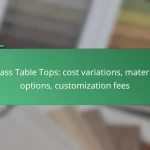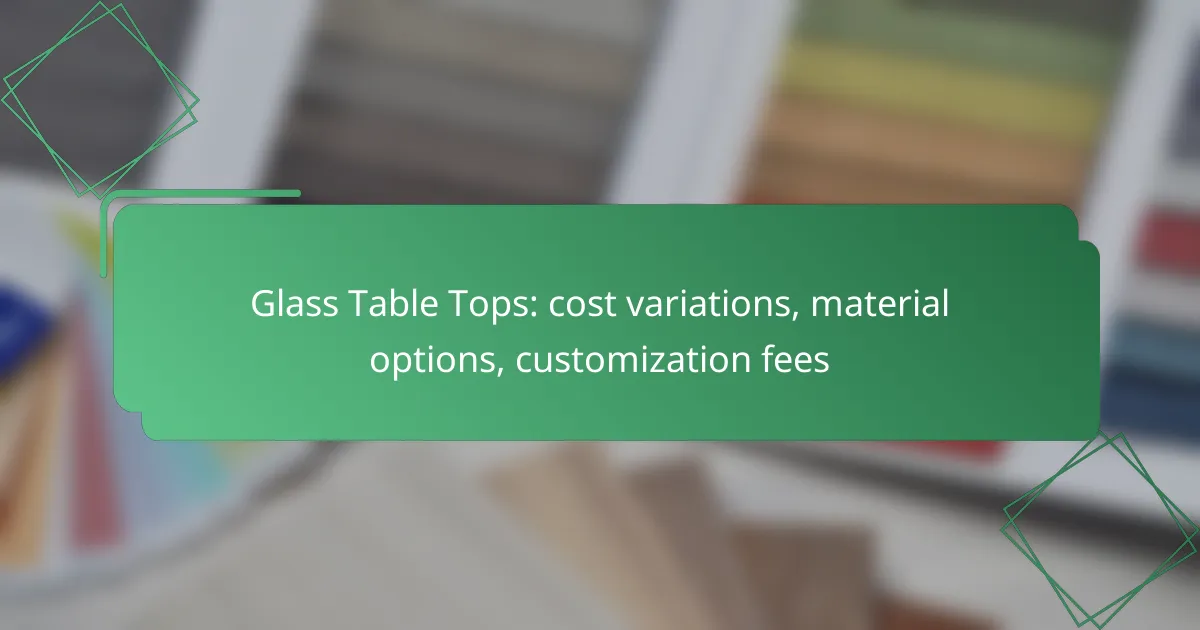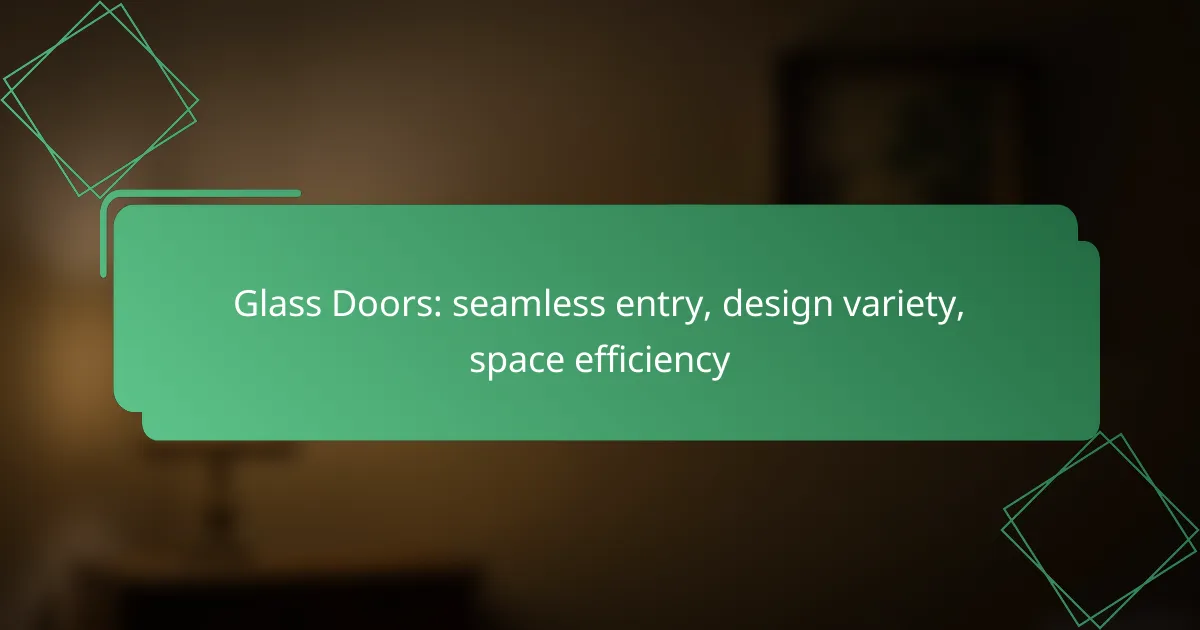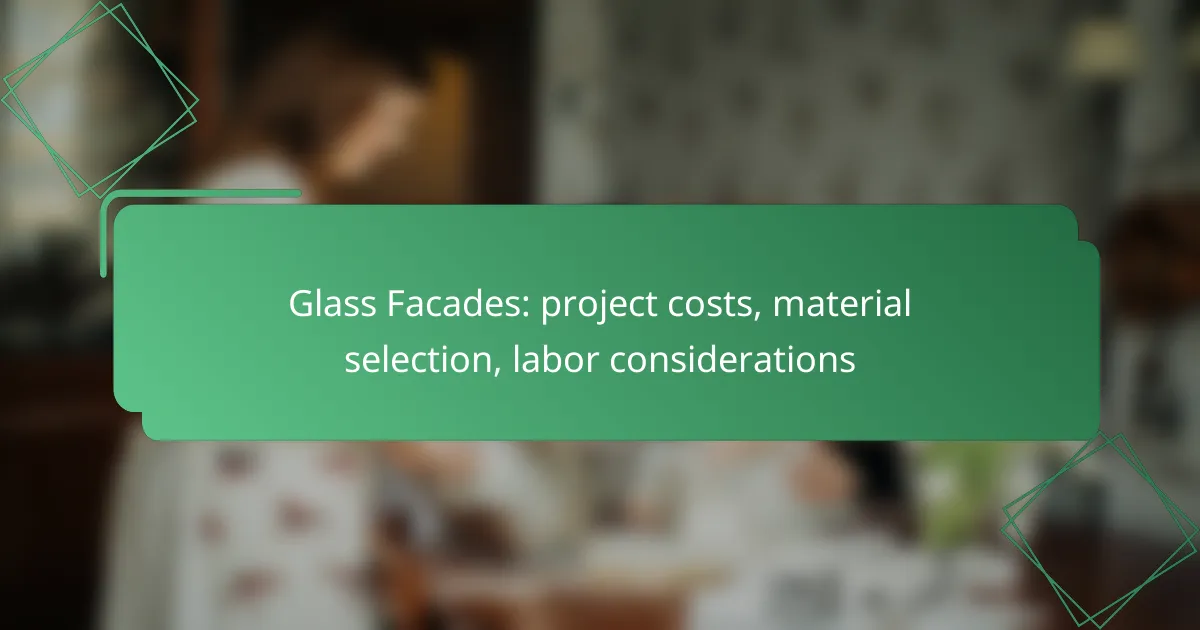Glass table tops offer a versatile and stylish option for any space, with costs in Canada varying widely based on size, thickness, and customization features. Available in materials like tempered, laminated, and low-iron glass, each type presents distinct advantages tailored to different preferences. Customization options, including edge finishes and shapes, can enhance both the aesthetic appeal and durability, while also impacting the overall price.
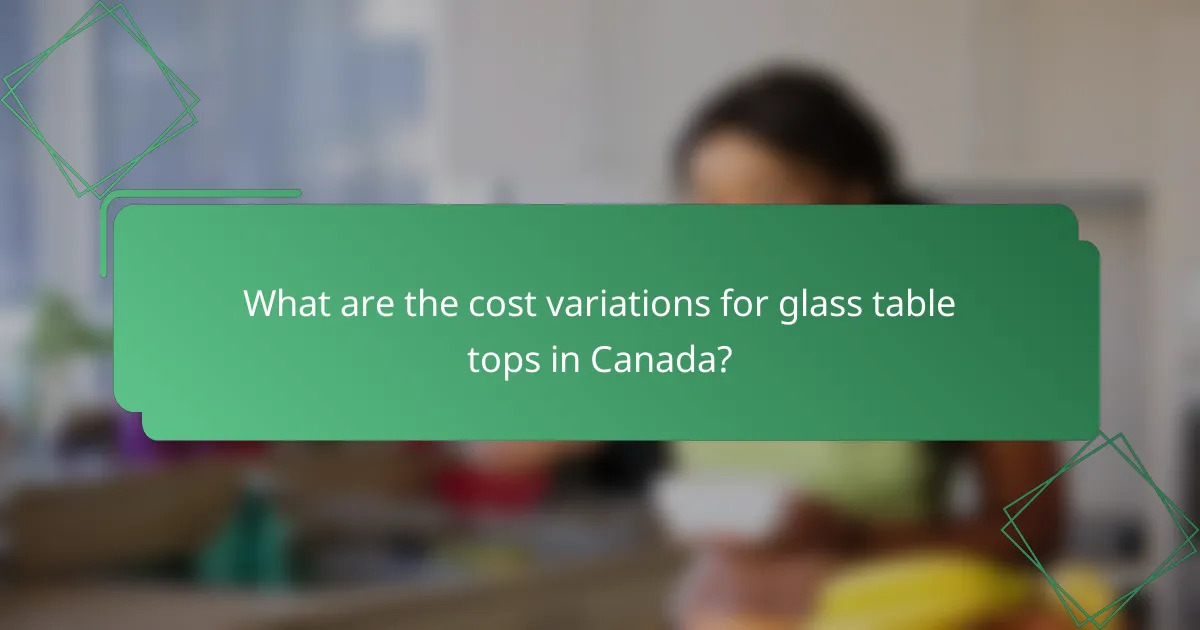
What are the cost variations for glass table tops in Canada?
The cost of glass table tops in Canada varies significantly based on factors such as size, thickness, and customization options. Generally, prices can range from a few hundred to over a thousand Canadian dollars, depending on the material and design choices.
Standard glass table top pricing
Standard glass table tops typically range from CAD 100 to CAD 500. This pricing usually applies to pre-cut, clear glass options in common sizes and thicknesses. For example, a standard 48-inch round table top may cost around CAD 200, while larger rectangular tops can be priced higher.
Custom glass table top pricing
Custom glass table tops can be significantly more expensive, often starting around CAD 300 and reaching upwards of CAD 1,200 or more. Customization options include unique shapes, thickness variations, and specialized finishes such as frosted or tinted glass. The more intricate the design and the larger the size, the higher the cost will be.
Factors affecting cost
Several factors influence the cost of glass table tops, including material quality, thickness, and size. For instance, tempered glass, which is stronger and safer, usually costs more than standard glass. Additionally, custom features like beveling or edge polishing can add to the overall price.
Location and supplier also play a role; prices may vary between retailers and regions within Canada. Always compare quotes and consider delivery fees, which can impact the final cost of your glass table top.

What material options are available for glass table tops?
Glass table tops come in several material options, each offering unique characteristics and benefits. The most common types include tempered glass, laminated glass, and low-iron glass, which cater to different aesthetic and functional needs.
Tempered glass properties
Tempered glass is known for its strength and safety features. It undergoes a heating and cooling process that makes it several times stronger than regular glass, reducing the risk of shattering. If broken, it fractures into small, blunt pieces, minimizing injury hazards.
When considering tempered glass for table tops, it’s essential to check for compliance with safety standards, such as ANSI Z97.1 in the United States. This ensures the glass meets the necessary durability and safety requirements.
Laminated glass benefits
Laminated glass consists of two or more layers of glass bonded together with a plastic interlayer, providing enhanced safety and sound insulation. This type of glass is less likely to shatter, as the interlayer holds the pieces together if broken.
Choosing laminated glass for table tops can be particularly beneficial in households with children or pets. It offers a combination of safety and aesthetic appeal, as it can be customized with various colors and textures between the glass layers.
Low-iron glass clarity
Low-iron glass is a high-quality option that features reduced iron content, resulting in exceptional clarity and transparency. This type of glass is ideal for showcasing intricate designs or colors in furniture, as it minimizes greenish tint often found in standard glass.
When selecting low-iron glass for table tops, consider its applications in modern and minimalist designs. While it may come at a higher cost compared to regular glass, the visual appeal and clarity can significantly enhance the overall aesthetic of your space.
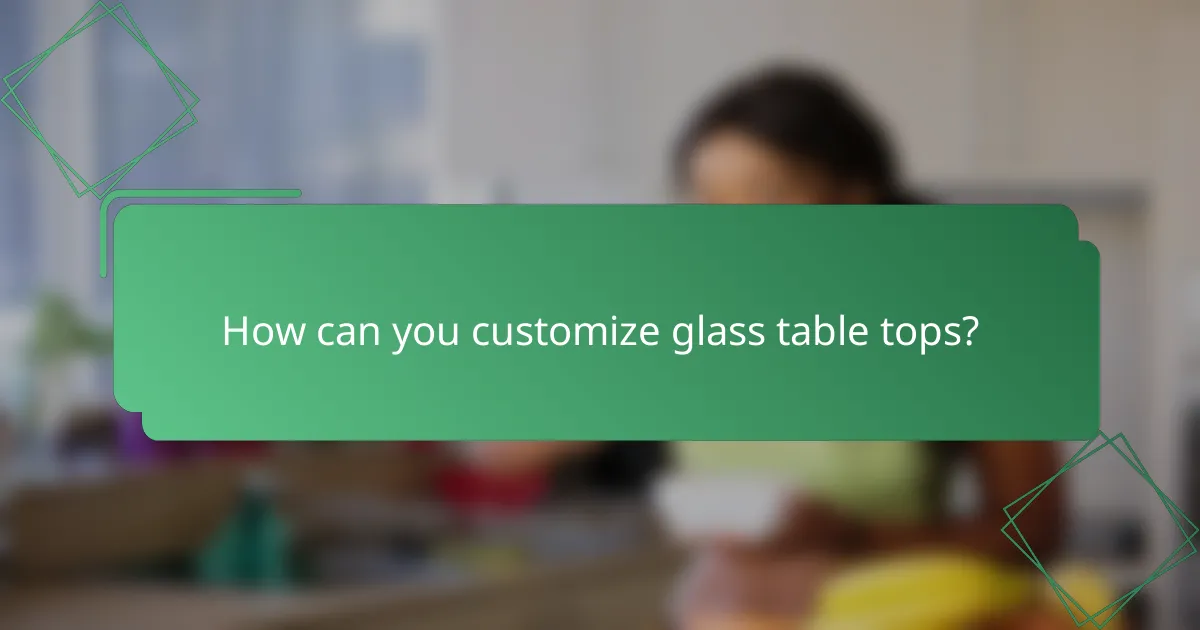
How can you customize glass table tops?
Customizing glass table tops involves selecting specific features such as edge finishes, thickness, and shapes to meet your aesthetic and functional needs. Each option can significantly influence the overall look and durability of the table, as well as the cost.
Edge finishing options
Edge finishing options for glass table tops include various styles such as flat polish, beveled, or rounded edges. Each finish not only alters the appearance but also affects safety and durability; for instance, rounded edges are often safer for homes with children. Consider the overall design of your space when choosing an edge finish.
Prices for edge finishing can vary, typically ranging from a few dollars to tens of dollars per linear foot, depending on the complexity of the finish. Always request samples or images to ensure the finish aligns with your vision.
Thickness variations
Glass table tops come in different thicknesses, commonly ranging from about 6 mm to 19 mm. Thicker glass tends to be more durable and resistant to breakage, making it a better choice for larger tables or heavy use. However, thicker glass can also increase the overall weight and cost of the table.
When selecting thickness, consider the intended use of the table. For dining tables, a thickness of 10 mm to 12 mm is often sufficient, while coffee tables may only require 6 mm to 8 mm. Balancing aesthetics with practicality is key.
Shape customization
Shape customization allows you to choose from standard shapes like rectangular, square, or round, as well as more unique designs such as oval or custom geometric shapes. The shape can impact both the table’s functionality and its fit within your space.
Custom shapes may incur additional fees, often ranging from 10% to 30% above standard pricing. When opting for a unique shape, ensure it complements your existing furniture and layout to maintain harmony in your room design.
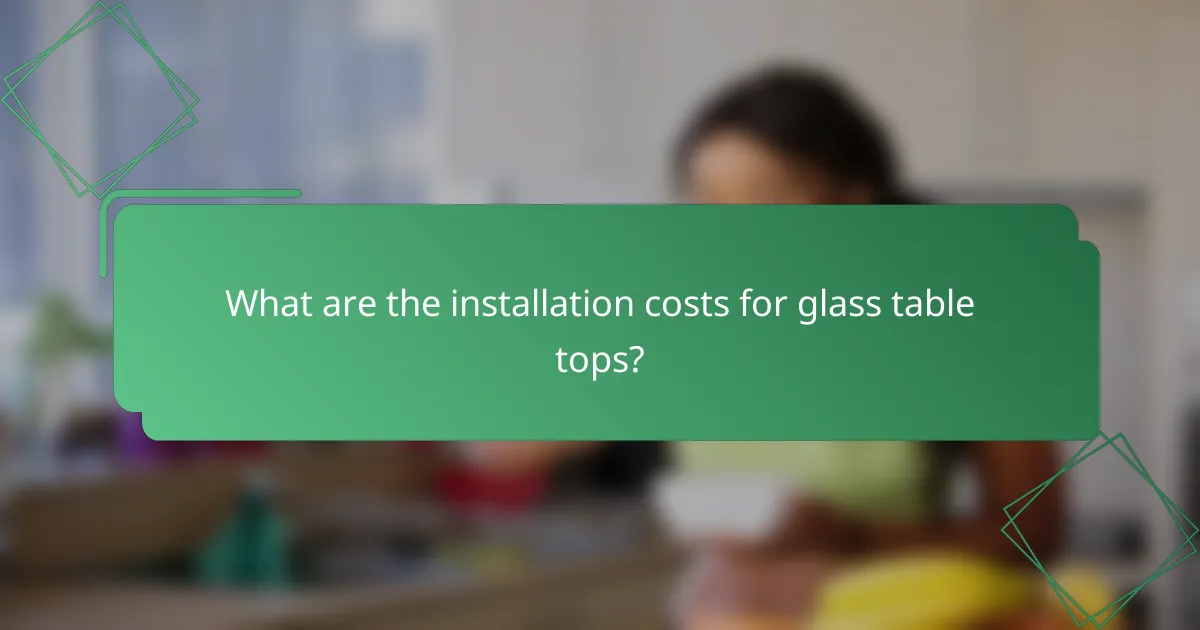
What are the installation costs for glass table tops?
The installation costs for glass table tops can vary significantly based on whether you choose professional installation or opt for a DIY approach. Generally, professional fees can range from moderate to high, while DIY installation may save money but requires careful consideration of the necessary tools and skills.
Professional installation fees
Hiring a professional to install glass table tops typically costs between $50 and $150, depending on the complexity of the job and your location. Factors such as the size of the table and the type of glass can influence the final price. For instance, larger or thicker glass may incur higher labor costs due to the additional handling required.
It’s advisable to obtain quotes from multiple installers to ensure competitive pricing. Always check for reviews or recommendations to find a reliable service provider, as the quality of installation can significantly affect the durability and safety of your glass table top.
DIY installation considerations
DIY installation can be a cost-effective option, potentially saving you the installation fees. However, it requires a good understanding of the materials and tools involved. Ensure you have the right equipment, such as a glass cutter, adhesive, and safety gear, to handle the glass safely.
Before starting, measure your table accurately and consider the weight of the glass. If you’re unsure about your skills, it may be worth consulting online tutorials or guides. Remember to prioritize safety; working with glass can be hazardous if not handled properly.
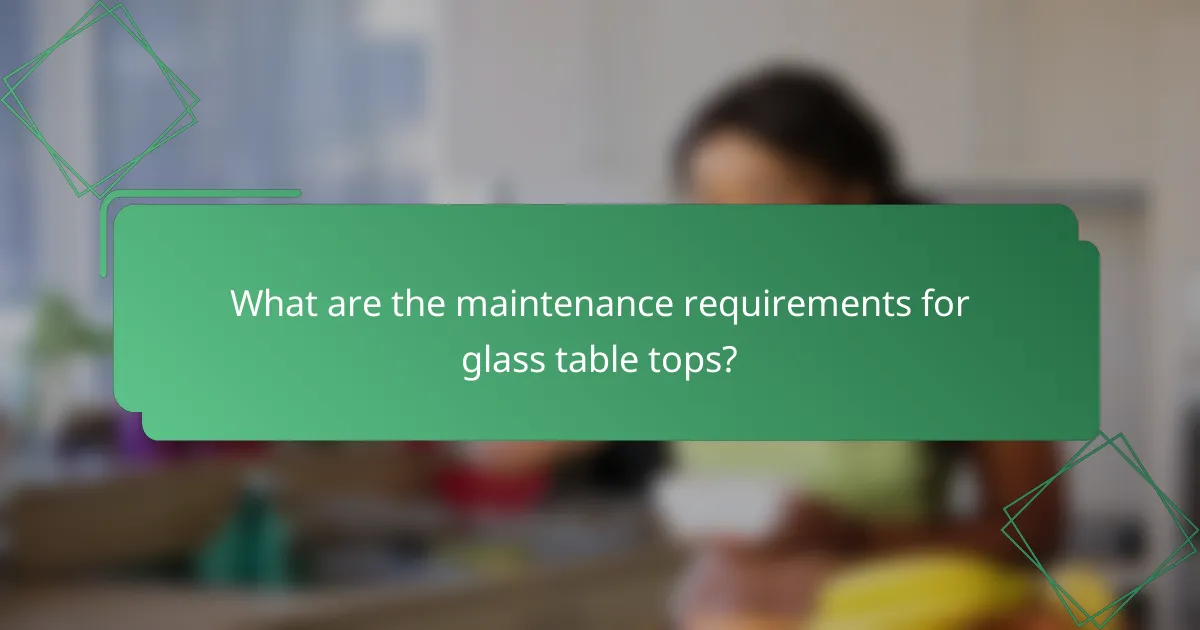
What are the maintenance requirements for glass table tops?
Glass table tops require regular maintenance to keep them looking pristine and to prolong their lifespan. Basic care involves cleaning and preventive measures to avoid scratches and damage.
Cleaning recommendations
To clean glass table tops, use a soft, lint-free cloth along with a gentle glass cleaner or a mixture of water and vinegar. Avoid abrasive cleaners or scrubbers, as these can scratch the surface. Regular cleaning every few days helps maintain clarity and shine.
For tougher stains, apply the cleaner and let it sit for a few minutes before wiping. This allows the solution to break down grime effectively. Always dry the surface thoroughly to prevent streaks.
Preventive care tips
To prevent scratches and chips, avoid placing heavy or sharp objects directly on the glass surface. Use coasters and placemats to protect against heat and moisture. Additionally, consider using felt pads under decorative items to minimize contact with the glass.
Position the table away from direct sunlight to reduce the risk of thermal stress, which can lead to cracks. Regularly inspect the table for any signs of wear or damage, addressing issues promptly to maintain its integrity.

What are the benefits of using glass table tops?
Glass table tops offer a range of benefits, including durability, aesthetic appeal, and ease of maintenance. They can enhance the overall look of a space while providing a sturdy surface for everyday use.
Durability and longevity
Glass table tops are known for their durability and longevity, often lasting many years without significant wear. Tempered glass, in particular, is designed to withstand impacts and resist scratches, making it a practical choice for busy households.
When considering durability, it’s essential to choose high-quality glass that meets safety standards. Look for options that are at least 6mm thick for everyday use, as thinner glass may be more prone to breakage.
Aesthetic appeal
The aesthetic appeal of glass table tops is one of their most significant advantages. They create a modern and elegant look, seamlessly blending with various interior styles, from minimalist to contemporary.
Glass tops can also enhance the visual space in a room, making it feel larger and more open. Additionally, they can be customized with different edge finishes or tints to match your decor, allowing for personal expression without sacrificing functionality.
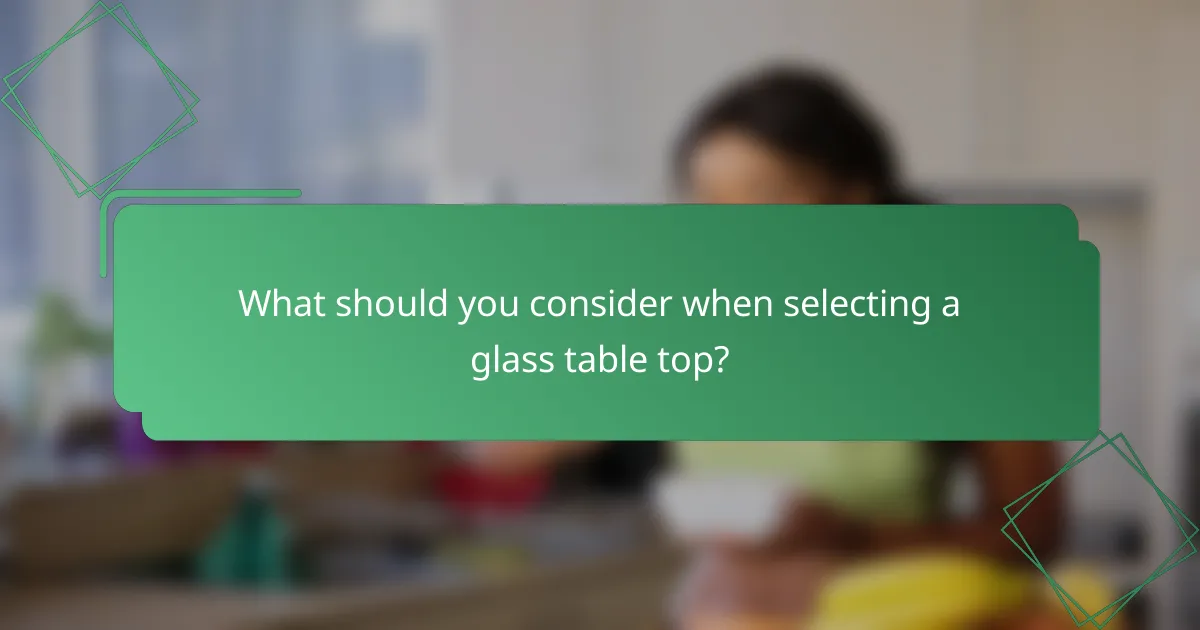
What should you consider when selecting a glass table top?
When selecting a glass table top, consider factors such as room size, layout, style compatibility, and customization options. These elements will influence both the aesthetic and functional aspects of your table, ensuring it fits well within your space.
Room size and layout
The size of your room and the layout are critical when choosing a glass table top. A larger table may overwhelm a small space, while a tiny table can look lost in a bigger room. Aim for a balance where the table complements the overall dimensions of the area.
Additionally, consider the flow of movement around the table. Ensure there is enough space for chairs and that people can easily navigate around the table without obstruction. A general rule is to leave at least 90 cm of clearance around the table for comfortable movement.
Style compatibility
Style compatibility is essential for a cohesive look in your home. A glass table top can suit various styles, from modern to traditional, but it should harmonize with existing furniture and decor. For instance, a sleek, minimalist glass top works well in contemporary settings, while a more ornate design may be better suited for classic interiors.
Consider the color and finish of the glass as well. Clear glass can create an airy feel, while tinted or frosted glass can add warmth and texture. Matching the table top with other elements, such as the legs or surrounding furniture, can enhance the overall aesthetic appeal.
